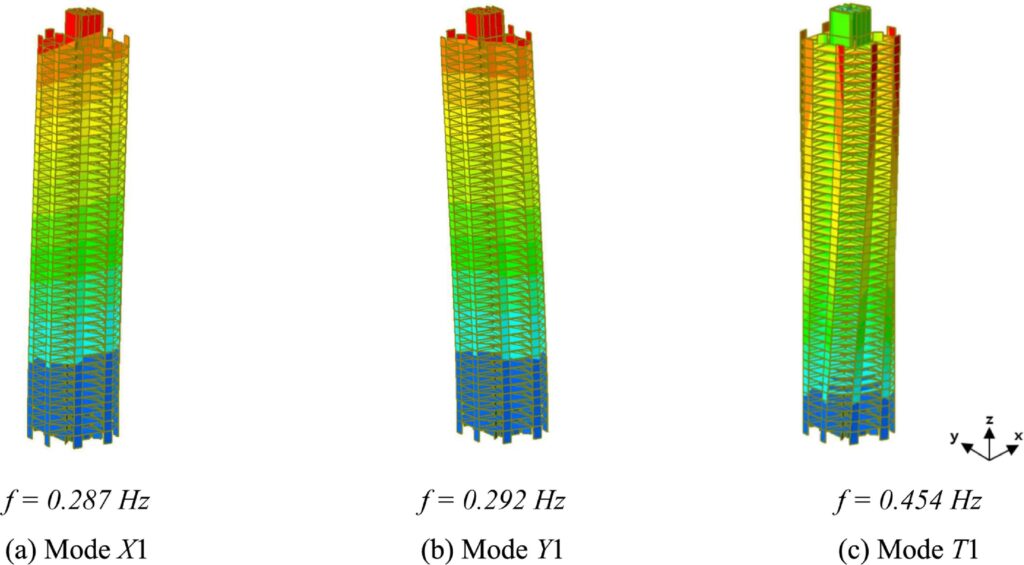From University of Bristol 20/09/23

Multi-storey buildings are assembled over cautiously to withstand wind strengths, researchers have found.
This is because there are several difficulties in estimating damping – the method of removing energy in order to control vibratory motion like noise and mechanical oscillation, accurately in high-rise buildings.
The findings, published today in the journal Structures, address the drawback and were compiled by a team at the University of Bristol who studied the damping and natural frequency characteristics of a 150 m tall building in London (UK) obtained from the full-scale wind-induced responses using a minimal monitoring system.
In general, the response of a structure subjected to dynamic loading is strongly affected by its damping.
Some mathematical damping models have been developed and used for convenience, though they cannot accurately describe the physical process behind them.

In fact, the lack of universally accepted principles to predict the damping factors in complex systems has led to the use of predominantly empirical models which cannot be generalized accurately to all types of buildings.
As one of the objectives, this research intends to address this drawback by studying the damping.
Lead author Daniel Gonzalez-Fernandez from Bristol’s School of Civil, Aerospace, and Design Engineering explained: “After evaluating the identified modal parameters in relation to a series of factors, including time, amplitude, wind speed, and wind direction, the dominant effects were found to be amplitude and time in the case of natural frequencies and amplitude in the case of damping ratios.
“The changes in the identified natural frequencies, with the monitoring time and response amplitudes, are attributed to the mass increase under the increasing occupancy and large-amplitude structural softening, respectively.
“The identified trends between the measured total damping and wind speed for different relative wind directions indicate that the amplitude of the lateral building motion, rather than aerodynamic wind characteristics, primarily influences the observed variation in the modal damping.”
The team used a set of three accelerometers and an ultrasonic anemometer to measure the wind-induced vibrations and associated wind conditions on top of the structure over a period of one year since it was first constructed.

The natural frequencies and damping ratios were identified from the estimated acceleration Power Spectral Densities and correlated with the wind data.
Several environmental parameters were investigated, including the magnitude and the relative directions of the wind with respect to the building motion.
A finite element model of the tower was also employed to support the experimental observations.
Wind effects are a primary concern in the design of tall buildings. In this context, significant uncertainty can be attributed to important phenomena such as damping and its sources.
Additionally, given the complexity of these systems, the underlying predictive models require validation.
This is where the in-situ measured modal characteristics, such as the natural frequencies and modal damping, provide an essential resource for model updating.
Daniel said: “For tall buildings, occupant comfort is directly related to wind-induced sway, which can interfere with the occupants’ daily activities and general well-being. In addition, these insights might be applied in the future to improve the design and mitigate the negative effects of the vibrations on the structures to enhance their performances, increase their lifespans, and reduce failure risk.
“Understanding these issues has become more critical in recent years since there is a trend for tall buildings to become more slender and hence more sensitive to wind-induced vibrations.”



